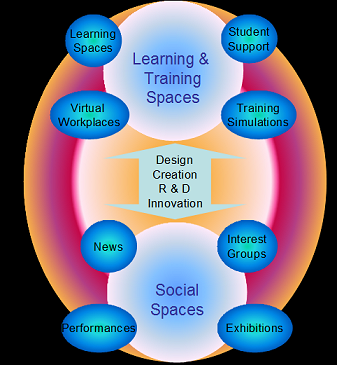 Why would you need high-speed broadband in education? That's the question I've been asked a few times over the last couple of months.
Why would you need high-speed broadband in education? That's the question I've been asked a few times over the last couple of months.At first I had no ready response - I thought it was obvious - clearly it isn't.
The context is the NBN rollout in Australia by 2015 to provide infrastructure that will deliver the bandwidths needed by 2030 and beyond. Tasmania is one of the early 'regions' where work has already begun and the first few towns are now connected. But many are still questioning the expense to the Nation and the need for 100Mbps - particularly for education.
Why do we need high-speed broadband in education?
Current bandwidth (and cost) is so inadequate that schools:
- restrict bandwidth (shaping) and volume (quotas) for users
- block rich media sites (for part or all of the day)
- can't effectively use video (a 2 minute video can take 5 minutes to play)
- can't use participative media due to tiny upload limits (asymmetric service)
- have established practices to keep file sizes and internet traffic as small as possible - creating a culture of limitation
- are limited in the online services they can provide to students off campus
- ICT is an add-on and not required for effective learning
- the Internet for learning is about email and occasional searching for information
- most 'content' on the Internet is irrelevant and even harmful for students
- most students won't use much ICT for further learning or in the workplace - and if they do they will be trained when required
There are many effective ways to use high-speed broadband for learning.
One way to illustrate how current bandwidths stifle learning is to consider video. Video is useful for demonstrations, tutorials, evidence for assessment, communication and story telling. At the moment however any online use of video has to be:
- short
- small window size
- low frame rate
- low resolution
The use of video becomes counter-productive when you can't clearly see what has been filmed - assuming the video plays without so many pauses that users give up in frustration.
When students produce videos that can be viewed online their work reaches an audience outside classroom walls. This makes the work authentic and meaningful. It raises the students' own expectations for quality and effectiveness. It provides avenues for feedback from and participation with local and global communities.
Video production provides engaging opportunities for learning a wide range of digital media skills. Video production for an external audience makes real for students many other complex issues such as copyright, ethical practice and terms of service. Video production that addresses community challenges such as cyber-bullying or de-forestation help to empower students to be active local and global citizens.
And that's just video. And just the video we know now. 3D video has already arrived in some homes. What bandwidths will we need by 2015 nevermind 2030?
How can we not have high-speed broadband?
What do we do in education until 2015?








 Many staff and students are using web services for displaying, organising and sharing their work. A number of Creative Arts teachers have been looking at how work might be tagged within these services so that staff and students can search for products created
Many staff and students are using web services for displaying, organising and sharing their work. A number of Creative Arts teachers have been looking at how work might be tagged within these services so that staff and students can search for products created




 Teacher and user guides (video and text) are available and a community of practice has been established across all campuses. It will be interesting to see how many staff and students decide to use E-Portfolios who were not part of previous projects.
Teacher and user guides (video and text) are available and a community of practice has been established across all campuses. It will be interesting to see how many staff and students decide to use E-Portfolios who were not part of previous projects.